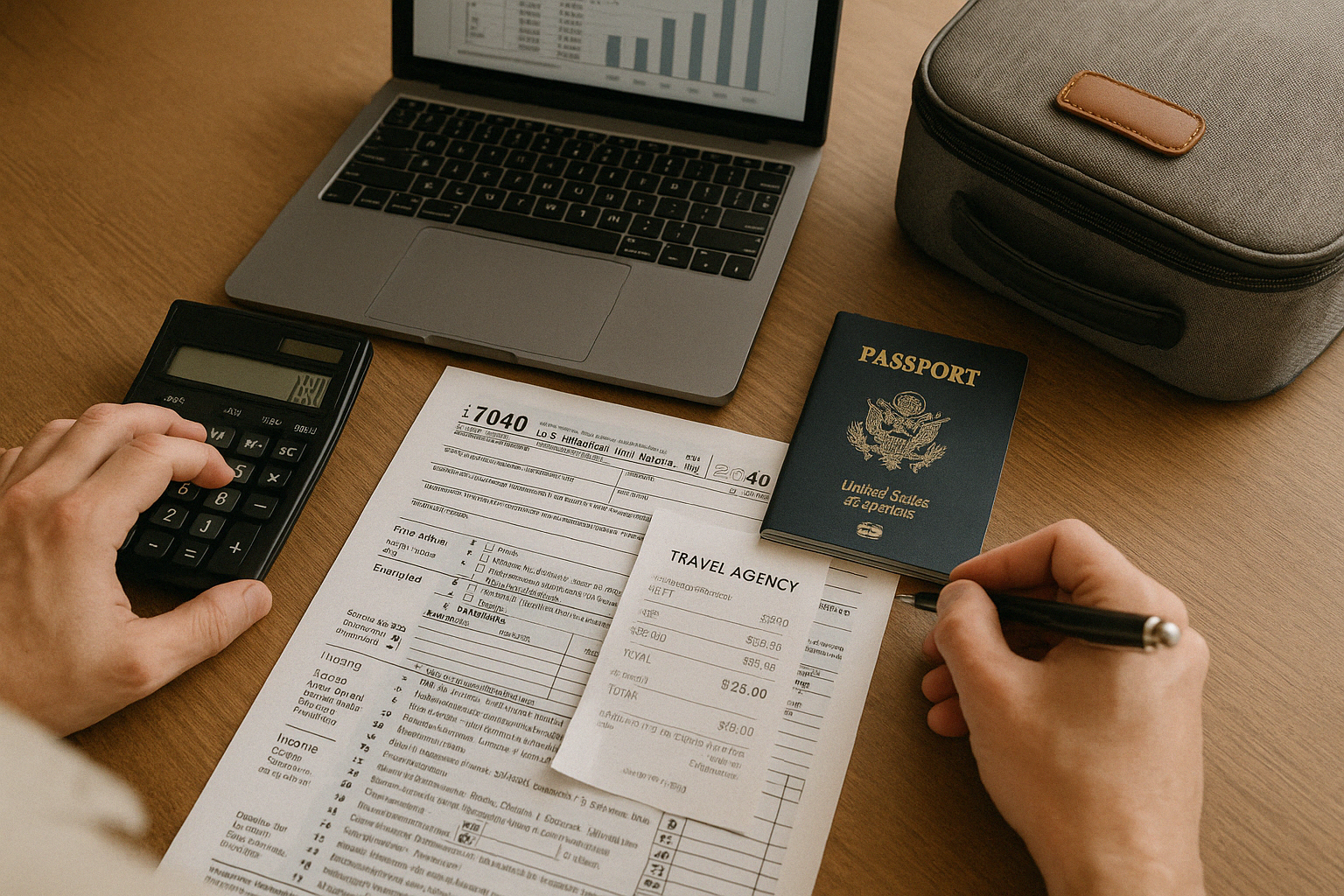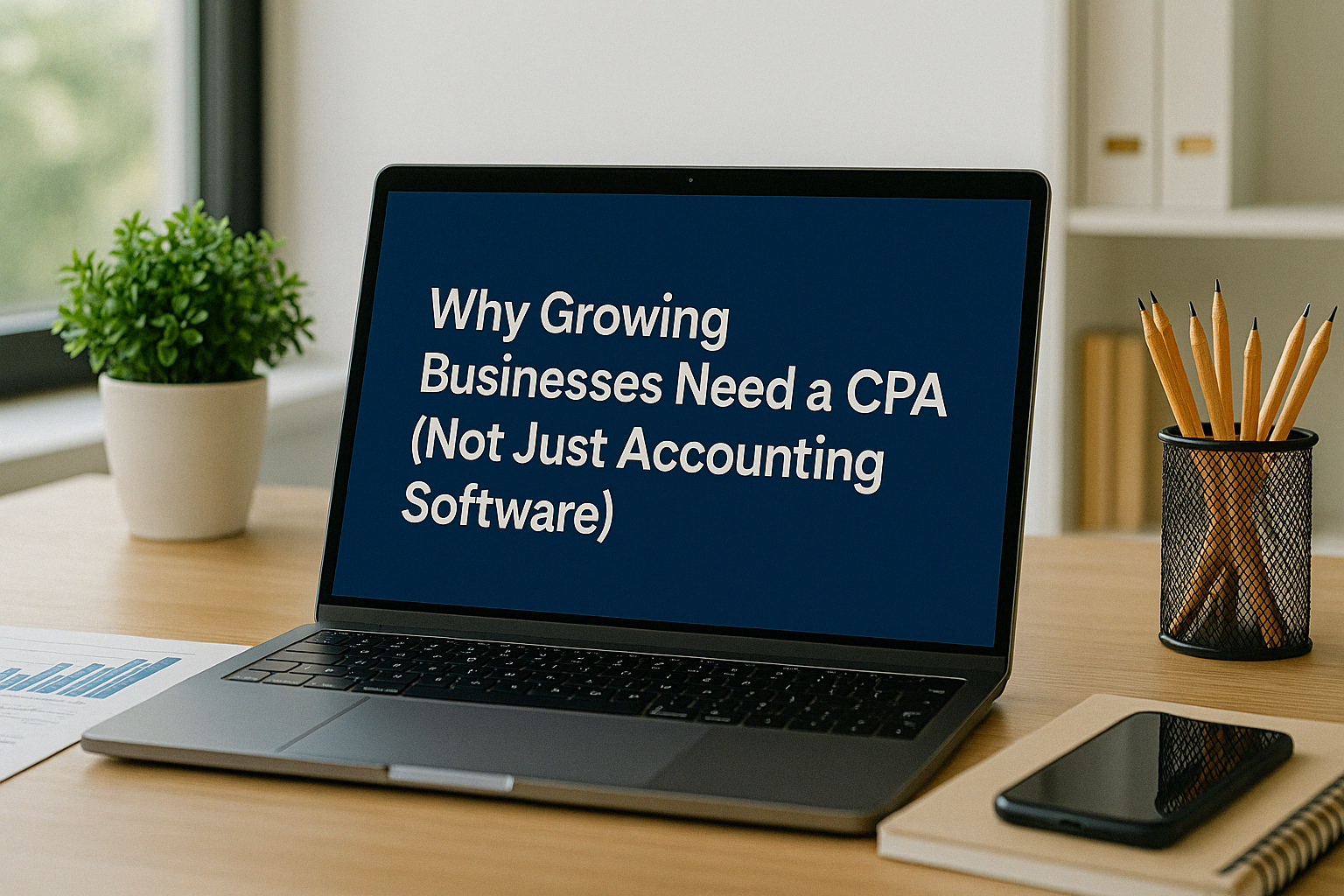How to Maximize Deductions on a Side Business While Staying IRS-Compliant

So, you've got a side hustle? That’s awesome! Whether you’re driving for a ride-share, freelancing your skills, or selling handmade goods, that extra income can be a real game-changer. But with that extra income comes extra responsibility—especially when it comes to taxes.
The good news? There are plenty of tax deductions available for side hustlers like you! The trick is knowing which expenses qualify and how to claim them without raising red flags with the IRS.
Understanding key concepts like self-employment tax, IRS compliance, and valuable write-offs (such as the home office deduction) can significantly impact your bottom line. We’ll cover the most common deductions and provide tips to help you navigate the often-confusing world of self-employment taxes.
Common Tax Deductions for Side Hustlers
1. Home Office Deduction
If you use part of your home exclusively and regularly for business, you may be able to deduct a portion of your housing expenses, including rent, mortgage interest, utilities, and even homeowner’s insurance.
✔ Example: If you use one room in your apartment solely for your business, and that room takes up 15% of your total square footage, you can deduct 15% of your rent, utilities, and other applicable housing expenses.
2. Business Supplies and Equipment
Everything from notebooks and pens to high-end computers and software can be deductible business expenses.
✔ Example: If you bought a new laptop specifically for your freelance business, you can deduct the cost of that laptop.
3. Internet and Phone Expenses
A portion of your internet and phone bills can be deducted if they’re used for business purposes. The key is to determine what percentage is actually for work.
✔ Example: If 60% of your internet usage is for your side hustle, you can deduct 60% of your monthly internet costs. Keep records to back this up, such as project timelines or call logs.
4. Vehicle Expenses and Mileage
If your side hustle involves driving—think food delivery or client visits—you can deduct vehicle expenses. You have two options:
✔ Standard Mileage Rate (a set amount per business mile, check the IRS website for current rates)
✔ Actual Expenses (gas, maintenance, depreciation, insurance, and repairs)
✔ Example: If you drive for a food delivery service, tracking your miles will let you deduct business mileage using the IRS mileage rate.
5. Professional Services and Software
If you hire a designer for a logo or use accounting software, these are deductible business expenses.
✔ Example: If you subscribe to project management software to stay organized, you can deduct the subscription cost.
6. Education and Training Expenses
Courses, certifications, and seminars related to your side hustle are deductible.
✔ Example: If you take an online course on digital marketing to improve your social media business, you can deduct the course fee.
7. Business Meals
You can deduct 50% of business meal costs if they are directly related to your business (such as client meetings).
✔ Example: If you meet a potential client for lunch to discuss business, save the receipt and note the business purpose.
8. Business Travel
Business-related trips, conferences, and travel are deductible, including flights, hotels, and rental cars.
✔ Example: If you attend an industry conference, you can deduct airfare, lodging, and meals.
9. Self-Employment Tax Deduction
If you're self-employed, you pay both employer and employee Social Security and Medicare taxes. However, you can deduct half of your self-employment tax from your taxable income.
✔ Example: If your self-employment tax totals $6,000, you can deduct $3,000 from your gross income before calculating taxable income.
10. Depreciation Deductions
If you purchase business assets such as equipment, vehicles, or office furniture, you may qualify for Section 179 or bonus depreciation to deduct these costs more quickly.
✔ Example: If you buy a professional camera for your photography side hustle, you may be able to deduct a large portion of its cost in the year of purchase instead of spreading it over several years.
11. Charitable Contributions
If your side hustle makes charitable donations, including donating inventory or appreciated assets, you may qualify for a tax deduction.
✔ Example: If you donate unused business inventory to a nonprofit organization, you may be able to deduct the fair market value of those items.
12. The Augusta Rule
If you rent out your home to your business for meetings or events, you may be able to receive tax-free rental income under the Augusta Rule.
✔ Example: If you host quarterly business planning meetings in your home, you could rent your home to your business for up to 14 days per year and deduct the rental expense from your business income—while receiving that income tax-free.
13. Employee Benefits Optimization
If you offer health insurance, life insurance, or other benefits to employees or contractors, these expenses are deductible.
✔ Example: If you cover part of your VA's health insurance costs, you may be able to deduct it as a business expense.
14. Research & Development (R&D) Tax Credit
If your side hustle involves innovation, software development, or product design, you may qualify for the R&D tax credit.
✔ Example: If you invest in developing a new app, website, or product feature, you may qualify for a credit that directly offsets your tax bill.
15. Work Opportunity Tax Credit (WOTC)
If you hire employees from targeted groups (such as veterans, long-term unemployed, or individuals receiving government assistance), you may qualify for a tax credit.
✔ Example: If you hire a veteran as a virtual assistant, you could receive a tax credit for part of their wages.
Staying IRS-Compliant: Avoiding Red Flags
Now that you know what you can deduct, let’s talk about how to do it correctly. The last thing you want is an IRS audit, so follow these best practices:
1. Keep Accurate Records
✔ Save every receipt, invoice, and record of your expenses.
✔ Track mileage, take screenshots of internet use, and keep notes on business meetings.
2. Be Reasonable
Don’t try to deduct personal expenses as business expenses. The IRS looks for deductions that are "ordinary and necessary" for your business.
3. Don’t Overdo It
Taking huge deductions compared to your income may raise red flags. If your deductions seem excessive, be prepared to justify them.
4. Report All Income
The IRS gets reports from payment platforms like PayPal, Venmo, and Stripe. Make sure you’re reporting all income from your side hustle.
5. Be Consistent
If you claim a home office deduction, make sure you actually use that space exclusively for business.
6. Watch Out for Cash Transactions
If your side hustle is cash-based, keep meticulous records of all transactions.
7. Avoid Claiming Losses Every Year
Claiming business losses multiple years in a row may make the IRS suspect your business is actually a hobby rather than a legitimate enterprise.
Final Thoughts from Straight Talk CPAs
Navigating taxes as a side hustler can feel overwhelming, but it doesn’t have to be. By understanding deductions and keeping meticulous records, you can minimize your tax liability and maximize your earnings.
It’s always a good idea to consult with a tax professional to get personalized advice for your unique situation.
And hey, if you ever feel lost or confused,
Straight Talk CPAs is here to help!
Discover Your Tax Savings Score in Minutes!


Salim is a straight-talking CPA with 30+ years of entrepreneurial and accounting experience. His professional background includes experience as a former Chief Financial Officer and, for the last twenty-five years, as a serial 7-Figure entrepreneur.




